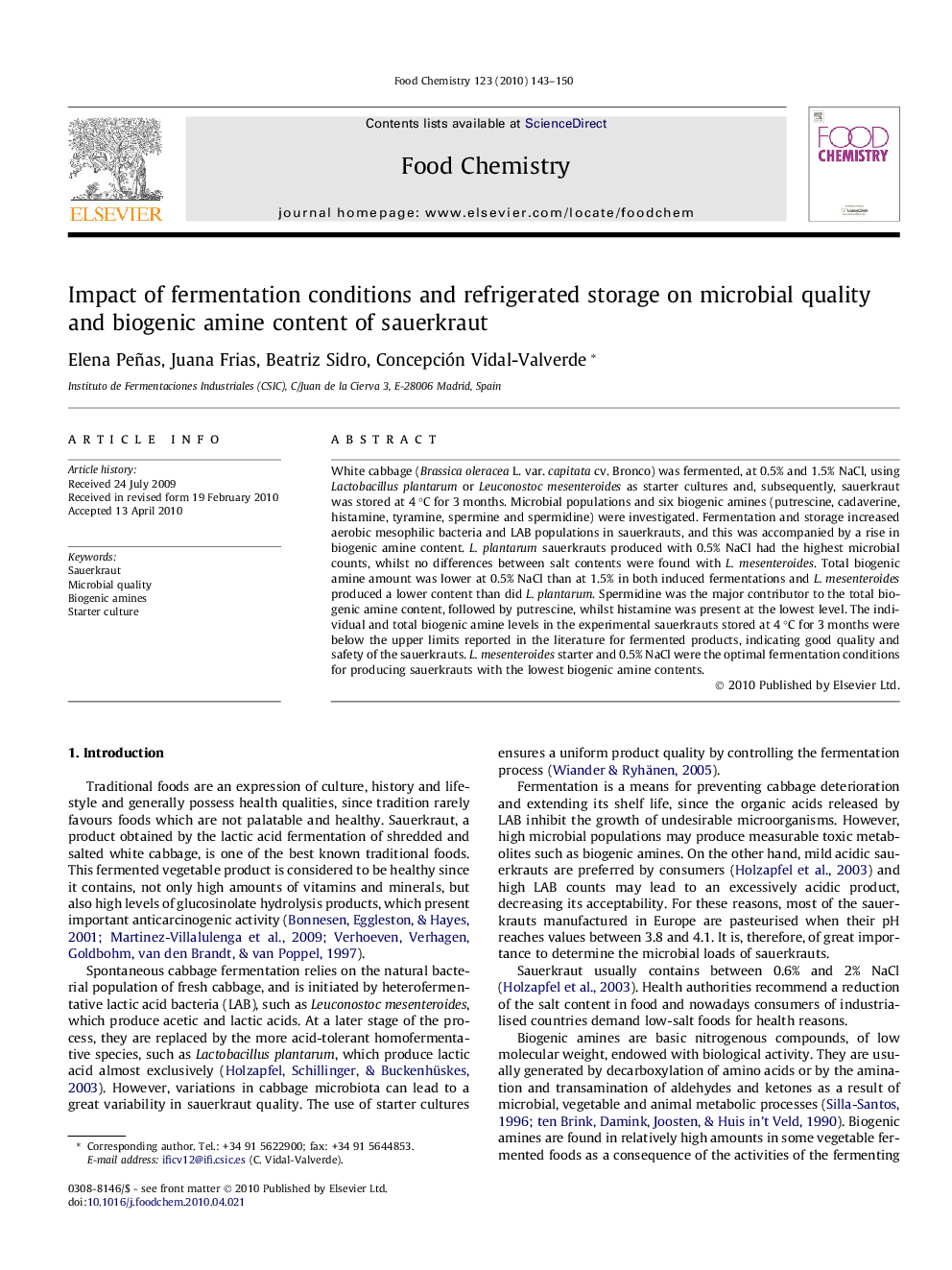| Article ID | Journal | Published Year | Pages | File Type |
|---|---|---|---|---|
| 1185008 | Food Chemistry | 2010 | 8 Pages |
White cabbage (Brassica oleracea L. var. capitata cv. Bronco) was fermented, at 0.5% and 1.5% NaCl, using Lactobacillus plantarum or Leuconostoc mesenteroides as starter cultures and, subsequently, sauerkraut was stored at 4 °C for 3 months. Microbial populations and six biogenic amines (putrescine, cadaverine, histamine, tyramine, spermine and spermidine) were investigated. Fermentation and storage increased aerobic mesophilic bacteria and LAB populations in sauerkrauts, and this was accompanied by a rise in biogenic amine content. L. plantarum sauerkrauts produced with 0.5% NaCl had the highest microbial counts, whilst no differences between salt contents were found with L. mesenteroides. Total biogenic amine amount was lower at 0.5% NaCl than at 1.5% in both induced fermentations and L. mesenteroides produced a lower content than did L. plantarum. Spermidine was the major contributor to the total biogenic amine content, followed by putrescine, whilst histamine was present at the lowest level. The individual and total biogenic amine levels in the experimental sauerkrauts stored at 4 °C for 3 months were below the upper limits reported in the literature for fermented products, indicating good quality and safety of the sauerkrauts. L. mesenteroides starter and 0.5% NaCl were the optimal fermentation conditions for producing sauerkrauts with the lowest biogenic amine contents.
